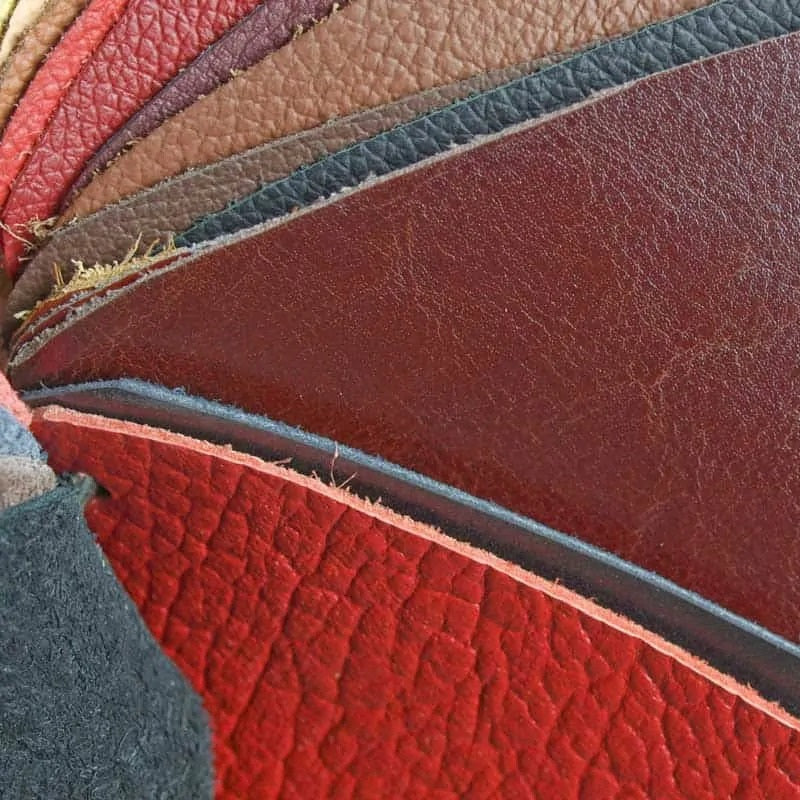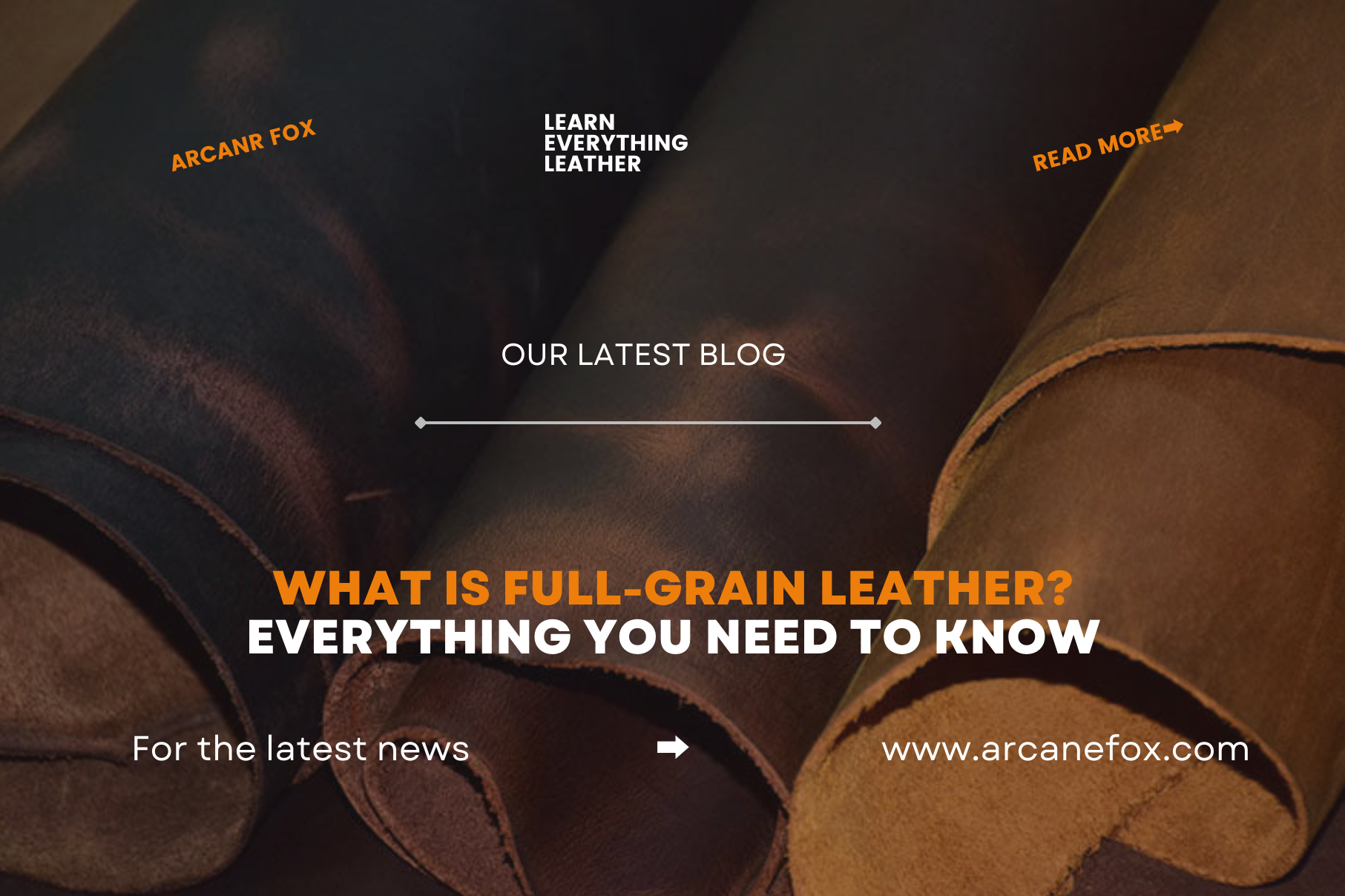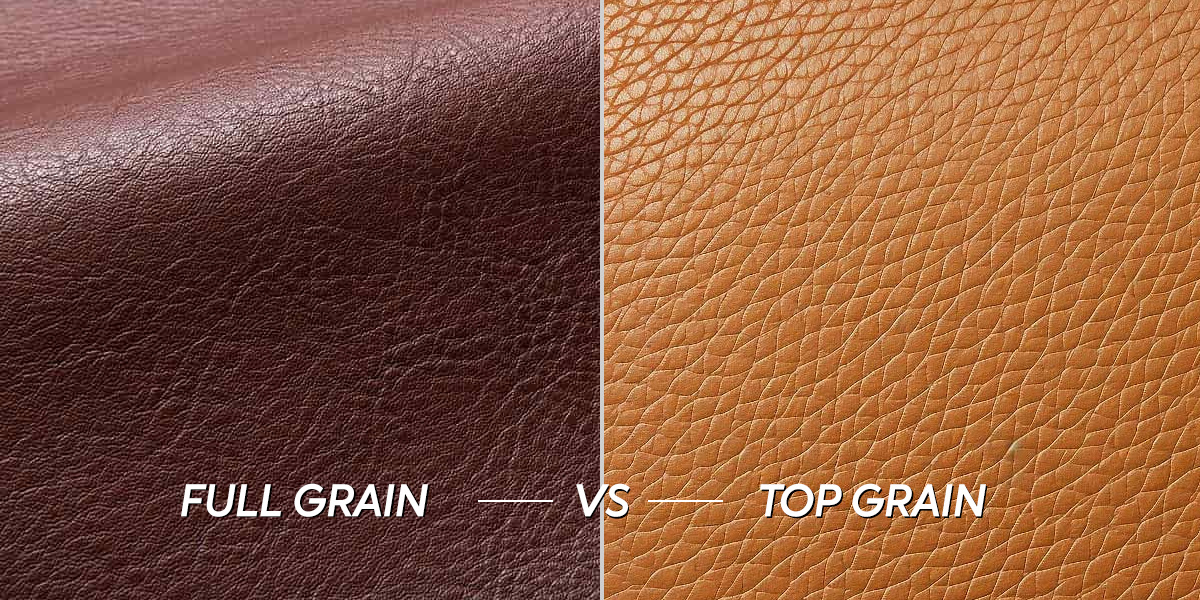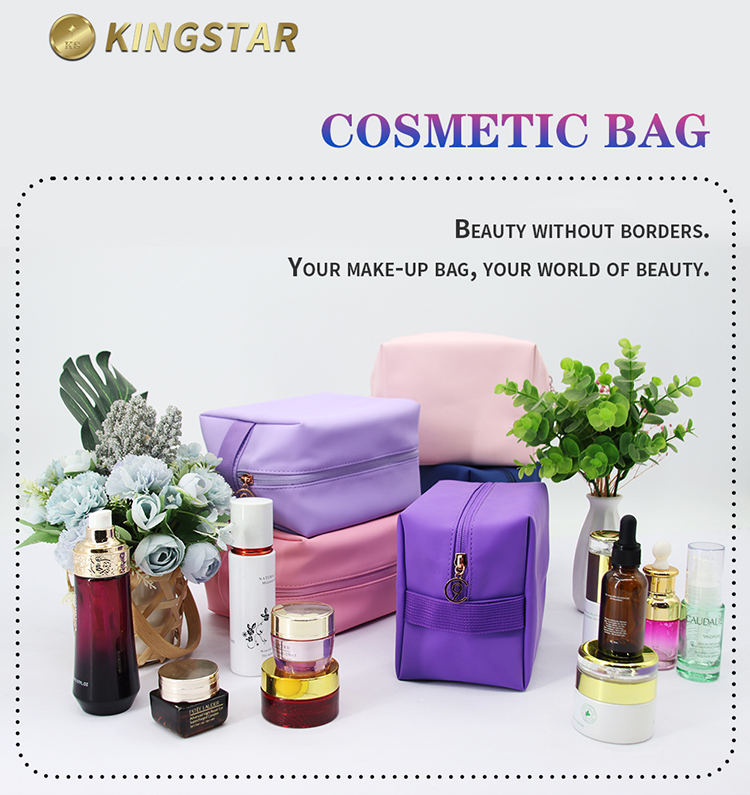Full-grain leather is the highest quality grade, derived from the top layer of the hide. It includes all the natural grain, retaining its inherent toughness.

- Unveiling the Premier Tier of Leather
- How Does Full-Grain Compare to Other Leather Grades?
- What are the Defining Characteristics of Full-Grain Leather?
- A Practical Guide to Sourcing Full-Grain Leather
- How Can You Identify Authentic Full-Grain Leather?
- Proper Care for Your Full-Grain Leather Investment

What is Full-Grain Leather and How is It Sourced?
Unveiling the Premier Tier of Leather
When discussing premium materials, full-grain leather stands in a class of its own. It represents the pinnacle of quality, celebrated for its durability, unique character, and ability to age gracefully. Understanding what makes it superior begins with understanding its origin and the minimal processing it undergoes.

Defining Full-Grain Leather: The Untouched Hide
Full-grain leather refers to the outermost section of the animal’s hide, just below the hair. Crucially, this layer is not sanded, buffed, or snuffed to remove imperfections. The entire grain surface—with all its original textures, pores, and markings—is preserved. This makes each piece of full-grain leather completely unique, telling a story through the natural scars, insect bites, and wrinkles from the animal’s life.
Because the dense, tightly-packed fiber structure of the outer hide remains intact, full-grain leather is the strongest and most durable type available. It resists moisture exceptionally well and develops a rich, desirable *patina* over years of use, a characteristic that is highly prized by connoisseurs of fine leather goods.
The Tanning Process: From Rawhide to Resilient Material
The journey from a raw animal hide to finished leather is a meticulous process called tanning. Tanning stabilizes the proteins in the hide, preventing putrefaction and turning it into a durable, long-lasting material. The two primary methods are vegetable tanning and chrome tanning.
Vegetable tanning is the traditional method, using natural tannins found in tree bark and other plant tissues. It is a slow, eco-friendly process that can take weeks or even months. The resulting leather is firm, has a distinctively earthy aroma, and is known for developing an exquisite patina. Chrome tanning, in contrast, uses chromium salts and is much faster, often completed in a single day. It produces a softer, more pliable leather that is often more resistant to water and heat.
How Does Full-Grain Compare to Other Leather Grades?
The term “leather” is often used broadly, but several grades exist, each with significant differences in quality, durability, and appearance. Recognizing these distinctions is key to making an informed purchase. Full-grain sits at the top, offering unparalleled quality that other grades attempt to imitate.
Full-Grain vs. Top-Grain Leather
Top-grain leather is the second-highest quality. It comes from the same top layer of the hide as full-grain, but its surface is lightly sanded and buffed to remove imperfections. A finish coat is then applied, which gives it a more uniform, plastic-like feel and appearance. While still strong and durable, this process removes the strongest fibers, making it slightly less resilient than full-grain. It is also less breathable and will not develop the same rich patina over time.
Distinguishing Full-Grain from “Genuine” and Corrected-Grain Leather
The term “genuine leather” is often misleading. While it is technically real leather, it is a lower-quality grade. It is created from the inner layers of the hide that remain after the top layers are split off for higher-grade leathers. The surface is heavily processed, sanded, and stamped with an artificial grain pattern to resemble a more natural look. It lacks the strength and longevity of full-grain and top-grain leather.
Corrected-grain leather is similar to genuine leather. It is made from hides with excessive natural flaws that are completely sanded away. An artificial grain is then embossed onto the surface, and it is treated with stains and dyes. This process creates a uniform but unnatural appearance.
Understanding Bonded Leather: The Lowest Tier
Bonded leather is at the bottom of the quality spectrum. It is not a true hide but a composite material made from leftover leather scraps, dust, and fibers. These particles are shredded and bonded together with polyurethane or latex onto a fiber backing. While it is inexpensive, bonded leather is not durable, is prone to peeling and cracking, and lacks all the desirable characteristics of real leather.
| Leather Grade | Source Layer | Surface | Durability | Patina Development |
|---|---|---|---|---|
| Full-Grain | Outermost layer | Natural, un-sanded | Highest | Excellent |
| Top-Grain | Outermost layer | Sanded and finished | Very High | Minimal |
| Genuine/Corrected-Grain | Inner layers | Artificially stamped | Moderate | None |
| Bonded | Leather scraps | Polyurethane coating | Low | None |
What are the Defining Characteristics of Full-Grain Leather?
The allure of full-grain leather lies in a unique combination of physical and aesthetic qualities. These characteristics are a direct result of its minimal processing, which preserves the natural integrity of the hide.
Unmatched Durability and Strength
The strength of full-grain leather comes from the dense and vertically oriented fibers of the hide’s top layer. This is the part of the skin designed by nature to protect the animal from the elements. By leaving this layer intact, the leather retains its maximum tensile strength, making it resistant to tearing, stretching, and puncture. A well-made full-grain product can last for generations with proper care.
The Beauty of Natural Imperfections
Unlike corrected grades, full-grain leather proudly displays its history. Natural markings such as scars, stretch marks, and insect bites are not flaws but signatures of authenticity. These “imperfections” ensure that no two full-grain products are exactly alike. They contribute to the character and rustic elegance of the material, offering a tangible connection to its natural origin.
Developing a Rich Patina Over Time
One of the most coveted features of full-grain leather is its ability to develop a *patina*. This is the soft sheen and darkening that occurs on the surface through use and exposure to the environment. Oils from your hands, sunlight, and daily friction all contribute to this process, gradually creating a unique finish that enhances the leather’s beauty. The patina tells the story of the product’s life and is a hallmark of high-quality material.
Breathability and Moisture Absorption
Because its pores are not sealed with an artificial finish, full-grain leather is highly breathable. This allows it to regulate temperature more effectively, making it comfortable for items like jackets and upholstery. It also means the leather can absorb moisture and oils, which contributes to the development of its patina and helps prevent it from drying out and cracking.
A Practical Guide to Sourcing Full-Grain Leather
Whether you are a consumer seeking a finished product or a crafter looking for raw materials, knowing how to source high-quality full-grain leather is essential. The process involves looking beyond surface-level marketing and understanding the markers of true quality.
For the Discerning Consumer: Finding Quality Products
When shopping for leather goods, look for brands that are transparent about their materials. Read product descriptions carefully for the term “full-grain leather.” Be wary of ambiguous labels like “100% real leather” or “genuine leather,” which often indicate a lower grade. Examine the product for natural grain variations and minor imperfections—a perfectly uniform surface is a red flag.
Brands dedicated to heritage craftsmanship, such as Beldțura Leather, exclusively use full-grain materials for their products because they understand that longevity and character are paramount. Investing in a piece from a reputable maker ensures you are getting a product designed to last a lifetime and improve with age. Ask about the leather’s origin and the tanning process used, as this reflects the brand’s commitment to quality.
For Crafters and Businesses: Procuring Hides
Sourcing raw hides requires a deeper level of knowledge. Your primary sources will be tanneries or leather suppliers. When contacting them, it is important to specify your needs. Inquire about the hide’s origin (e.g., cowhide, bison), the tanning method (vegetable-tanned, chrome-tanned), and the temper (softness or firmness) of the leather.
Ask about the tannery’s grading system. Hides are typically graded based on the number of imperfections on the surface. A “first-run” or Grade A hide will have the fewest marks and command the highest price. Request samples to assess the feel, smell, and finish of the leather before committing to a larger order. Building a relationship with a reliable supplier is crucial for consistently obtaining high-quality materials.
How Can You Identify Authentic Full-Grain Leather?
With so many different grades and imitations on the market, identifying authentic full-grain leather can be challenging. However, a few sensory checks can help you distinguish the real thing from lower-quality alternatives.
Examining the Surface Grain
Look closely at the surface. Full-grain leather will have a visible, sometimes pebbled, grain pattern with small, natural imperfections. You should see pores, tiny scars, or subtle variations in texture. If the surface looks perfectly uniform or has a repeating, stamped pattern, it is likely corrected-grain or faux leather.
The Feel and Smell Test
Press your finger firmly into the leather. Real full-grain leather will wrinkle and pull slightly under pressure, much like skin. Lower-grade and synthetic leathers often feel stiff and plastic-like. Authentic leather also has a distinct, rich, earthy smell. A chemical or plastic odor is a clear sign of a synthetic or heavily treated material.
Checking the Edges and Backside
If possible, look at the edge of the material. A cut edge of full-grain leather will look fibrous and rough. Bonded leather edges often look layered and synthetic. The backside, or flesh side, of a full-grain hide should feel suede-like and have a napped texture. If the back is covered with a fabric lining, it may be an attempt to hide a lower-quality material.
Proper Care for Your Full-Grain Leather Investment
Full-grain leather is an investment in quality and longevity. With the right care, your leather goods can last for decades, becoming more beautiful with each passing year. The goal is not to keep it looking new but to help it age gracefully.
Routine Cleaning and Conditioning
For general cleaning, simply wipe the leather with a soft, dry, or slightly damp cloth. Avoid using harsh soaps or chemical cleaners, as they can strip the natural oils from the hide. Every 6-12 months, or whenever the leather feels dry, apply a high-quality leather conditioner.
Use a clean cloth to apply a small amount of conditioner in a circular motion. Let it absorb for a few hours, then buff off any excess with another clean cloth. Conditioning replenishes the oils in the leather, keeping it supple and preventing it from drying out and cracking.
Storing Your Leather Goods Correctly
Proper storage is essential for maintaining the shape and condition of your leather items. Store them in a cool, dry place away from direct sunlight, which can cause fading and drying. Use a breathable fabric bag, such as cotton, to protect items from dust. Avoid storing leather in plastic bags, as this can trap moisture and lead to mildew. For bags or shoes, stuff them with acid-free paper to help them maintain their shape.

